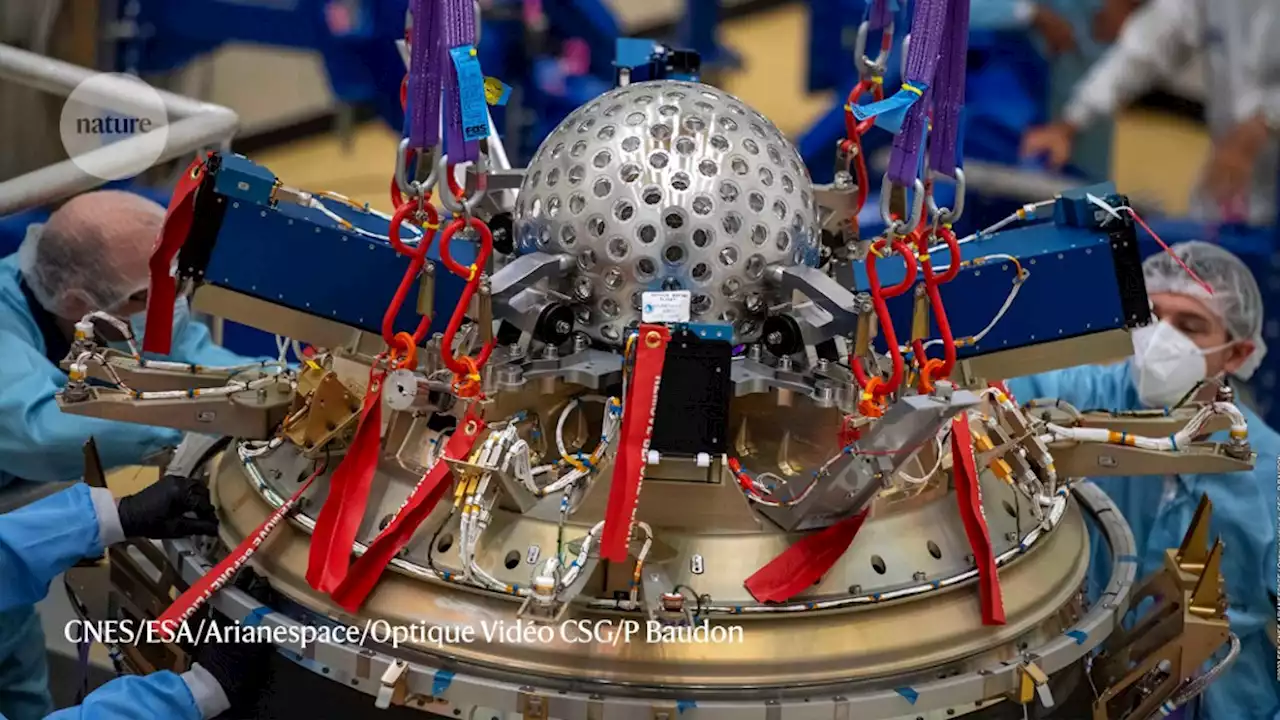Scientists hope a laser-reflecting sphere will produce the most accurate measure so far of how Earth’s rotation warps space.
The surface of LARES-2 is covered in hundreds of reflectors that will reflect laser pulses sent out by a global network of laser-ranging stations.A newly launched satellite aims to measure how Earth’s rotation drags the fabric of space-time around itself — an effect of Einstein’s general theory of relativity — ten times more accurately than ever before.
The rocket’s performance was “spectacular”, says mission leader Ignazio Ciufolini, a physicist at the University of Salento in Lecce, Italy. “ESA and ASI put the satellite into its orbit with a precision of just 400 metres.” This precise positioning will help improve the quality of the researchers’ measurements, Ciufolini adds.
Using an existing global network of laser-ranging stations, Ciufolini and his colleagues plan to track the orbit of LARES-2 for several years. This kind of probe can continue to provide data for decades. “You can just sit back and send laser beams to it,” Will says. “In terms of cost it’s a cheap, good thing to do.”
